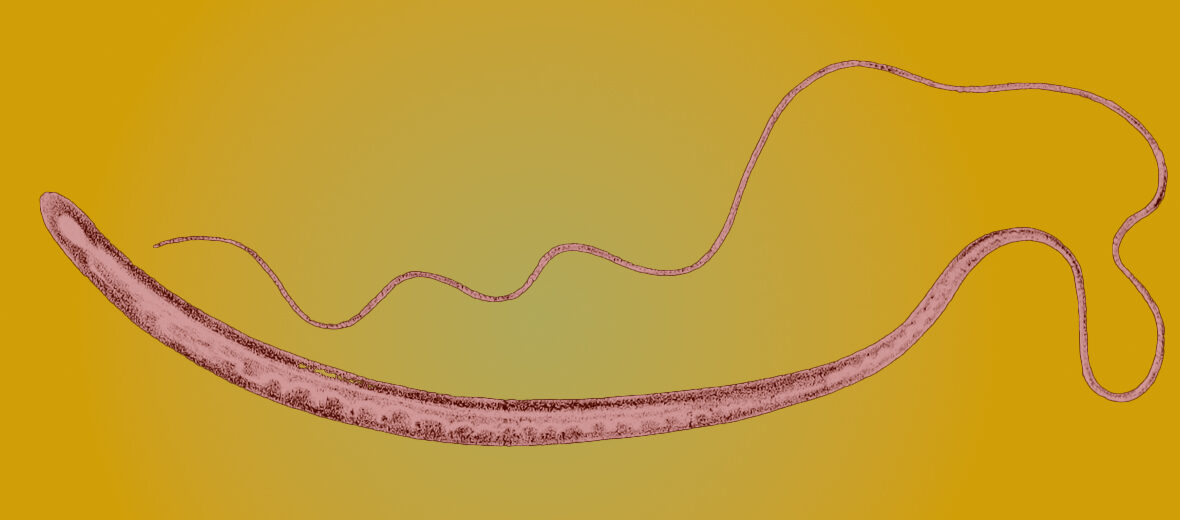
The whipworm is a parasitic species of roundworm that is usually obtained from eating food or drinking water that contains these worms. They can infect both animals and humans alike. These parasites can cause trichuriasis, aka whipworm disease. This results in abdominal pain, fatigue, diarrhea (often times accompanied with bloody stools), and rectal prolapse. In children and smaller animal hosts it can cause reduced intellectual and physical development.
First the Stats…
Scientific name: Trichuris trichiura or Trichocephalus trichiuris
Length: Up to 1.97 inches
Lifespan: Up to 1 year in animals, up to 3 years in humans
Now on to the Facts!
1.) They are called whipworms because they literally look like a whip with wider “handles” at the posterior end.
2.) These parasites typically enter the body via ingestion of contaminated dirt or fruits and vegetables that were not properly cleaned and/or peeled.
3.) Trichuris trichiura can be treated with a single dose of albendazole or mebendazole.
4.) The unfortunate fact is that, it has been shown that both albendazole and mebendazole have low cure rates for Trichuris thrichiura specifically, with treatments only acquiring cure rates 31% for albendazole and 42% for mebendazole.
5.) Tropical environments are most commonly the hot spots though, with southeast Asia, Africa, and South America being the top locations for Trichuris thrichiura.
But wait, there’s more on the whipworm!
6.) In the United States, infection is typically rare, but may be common in the rural southeast, where an estimated 2.2 million people are thought to be infected. This is due to the increased rate of poor hygiene.
7.) Females produce up to 20,000 single celled eggs per day. That equates to 7,300,000 eggs in 1 year!
Did you know…?
Trichuris trichiura has a worldwide distribution with an estimated 1,000,000,000 human infections and an untold amount of animal infections!
8.) Eggs are deposited from human feces (poop) to soil where, after up to 3 weeks, they become embryonated and enter the “infective” stage.
9.) The infective eggs are ingested by hand-mouth or through fomites (inanimate objects) and hatch in the human small intestine, using the intestinal microflora as a hatching stimulus.
10.) The infective larvae penetrate the villi and continue to develop in the small intestine. The young worms move to the caecum and penetrate the mucosa, and there they complete development as adult worms in the large intestine. The entire development into adult worms takes up to 3 months.
Now a Short Whipworm Video!
Be sure to share & comment below! Also, check out the Critter Science YouTube channel. Videos added regularly!
Want to suggest a critter for me to write about? Let me know here.
Some source material acquired from: Wikipedia




